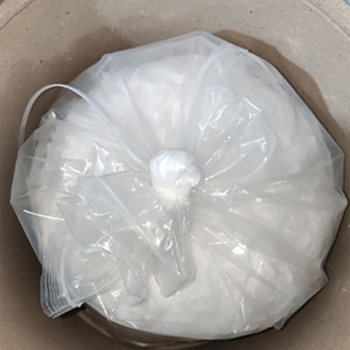Home / Products

Abamectin represents a crucial tool in pest management, known for its effectiveness against a wide range of agricultural and veterinary pests. Its unique mechanism of action and low environmental persistence make it a valuable component of integrated pest management strategies, though careful application is necessary to mitigate its risks to non-target organisms.
I. Basic Information
Chemical Formula: C48H72O14 (B1a)·C47H70O14 (B1b)
Molecular Weights: B1a - 873.09, B1b - 859.06
CAS Number: 71751-41-2
Appearance: White or light yellow crystalline powder
Boiling Point: 875.9 to 1005.9°C (at 760 mmHg)
Water Solubility: Slightly soluble
Density: 1.19 to 1.21 g/cm³
Flash Point: 240.3 to 295.9°C
II. R&D and Production Abamectin is derived from the fermentation of Streptomyces avermitilis, a soil actinomycete. It comprises approximately 80% avermectin B1a and 20% B1b, with B1a being the more bioactive component. The compound is notable for its potent insecticidal, acaricidal, and nematicidal activities.
III. Mechanism of Action Abamectin functions as both a stomach poison and contact insecticide. It interacts with glutamate-gated chloride channels and GABA receptors, enhancing chloride ion influx, which leads to hyperpolarization and paralysis in insects. Symptoms appear within 2 to 4 days, but it does not affect insect eggs, allowing for population resurgence.
IV. Main Uses
Agricultural: Controls a variety of pests such as spider mites, fruit flies, and various crop-specific insects (e.g., leaf miners, cotton bollworms).
Veterinary: Treats parasitic diseases in animals, including heartworm in dogs and nematode infections in livestock.
V. Formulations and Methods of Use Abamectin is available in multiple formulations, including emulsifiable concentrates (EC), water emulsions (EW), and water-dispersible granules (WDG). Application methods should be tailored to specific pests and crops.
VI. Safety and Precautions Abamectin is highly toxic to aquatic life and bees but poses lower toxicity to birds. Proper protective measures during application are essential to prevent accidental exposure. It is sensitive to light and extreme pH, which can degrade its efficacy.
PS Chemical Consortium invented an extraction method of avermectin B2a, the steps are as follows: 1) the single-component avermectin B2a fermentation liquid is subjected to plate-frame filtration, the bacterial cells are collected, and an ethanol and toluene mixed organic solvent is used, wherein the volume ratio of ethanol to toluene in the ethanol and toluene mixed organic solvent is 1 to 5, and the extraction is performed for 2 to 6 hours, and the obtained solution is the avermectin B2a extract; 2) activated carbon is added to the avermectin B2a extract in step 1), heated to 50°C to 80°C, decolorized, and filtered to remove the activated carbon; 3) the avermectin B2a extract after decolorization in step 2) is freeze-dried to obtain crystallized avermectin B2a. The present invention uses cheap activated carbon, toluene and ethanol to treat the fermentation liquid, and the crystallized avermectin B2a obtained fully meets the purity requirements, and the process is simple and economical.



References
Abamectin promotes behavior changes and liver injury in zebrafish.
Chemosphere, Volume 311, Part 1, January 2023, 136941 DOI: 10.1016/j.chemosphere.2022.136941
In our study, the toxicological effects of a commercial formulation containing abamectin on the liver and behavior of zebrafish (D. rerio) were investigated. The animals were submitted to acute and short-term exposure to distinct concentrations of the drug. Our major findings evidenced behavior and hepatic alterations due to abamectin's toxic effect.
The key factors of solid nanodispersion for promoting the bioactivity of abamectin
Pesticide Biochemistry and Physiology, Volume 201, May 2024, 105897 DOI: 10.1016/j.pestbp.2024.105897
We prepared abamectin SND consisted of 8% abamectin, 1% antioxidant BHT, 12% complex surfactants and 79% sodium benzoate (w/w) as carrier by self-emulsifying-carrier solidifying technique. The SND had excellent storage stability at low, thermal and ambient temperatures. The pseudo-solubility of abamectin was raised at least 3300 times and the particle size was >667 times smaller than that of EW and WDG.